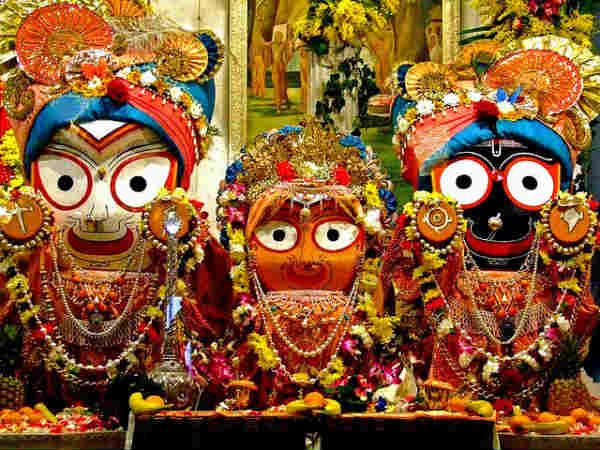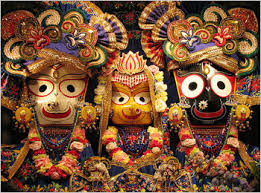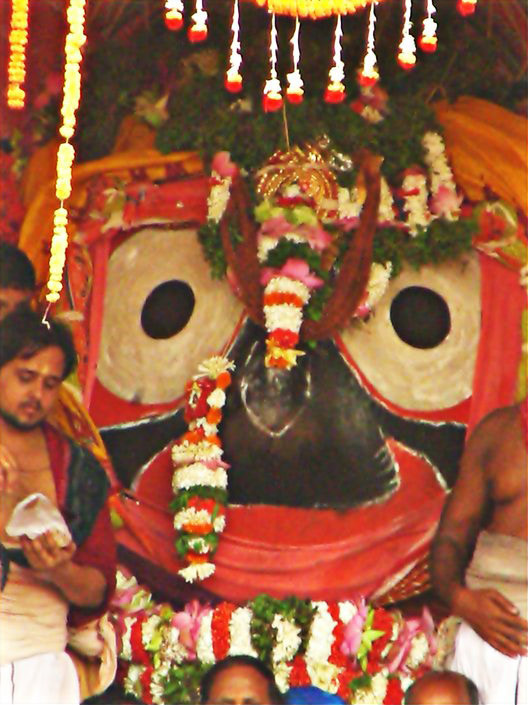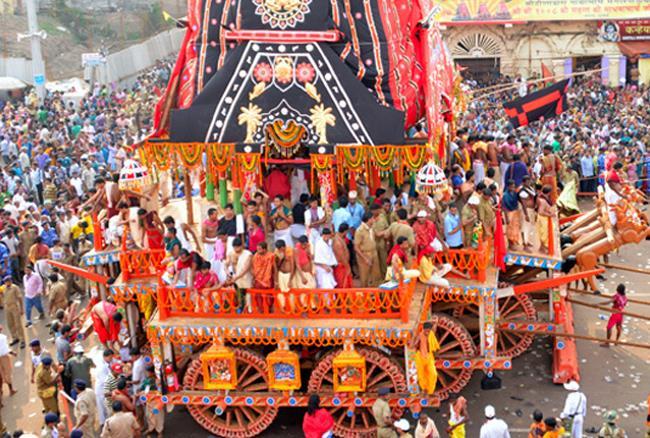
According to stories heard from so long, The poet Tulsidas once visited Puri in search of lord ram, which he used to call Raghunath. After completing his darshan of Lord Jagannath, he was extremely disappointed. He was so sad that he walked away.
Tulsidas then reached a village called Malatipathpur. There he sat down under a tree and started to cry. A boy passing by came up to him and asked him the reason for his agony. The poet explained to the boy that his Raghunath, whom he loved so dearly, had actually eluded him at Puri and that he was non-existent in what he saw at the temple.

The boy then explained Tulsidas that Raghunath as an offshoot of Param Bramha, who can move without feet, see without eyes and listen without ears,“Bina pada chance”, “Bina aankh dekhe”, “Bina Kaan suney”. It was then that Tulsidas realised his folly and rushed back to Puri to find his Raghunath.
This explains why Jagannath has no ears, no hands and no feet.

There is another story behind the idol not having ears, legs and hands
According to people of old times, it is said that the temple was originally presided over by a Vishnu statue with four hands holding the signature shankha, chakra, gada, padma , conch, wheel, mace and the lotus made of blue sapphire Neelam, hence the name Neela Madhab. Jagannath is worshipped even today as Neela Madhab.
This temple was attacked many times by the Mughal emperor, as also later on, by Kalapahar, the 16th-century marauder. The idol was badly damaged many times. The king of Puri then took a decision to replace it with something that can be recreated time and again, no matter how many times it gets destroyed. The new statue is an example of tribal art possibly borrowed from nearby villages. This art form has a strong Buddhist influence, as the time of the king’s decision was possibly around the 16th century.

The temple was originally built in the 12th century, much after Ashoka’s Kalinga conquest. Jagannath, Balbhadra and Subhadra are Daru idols, or, made from Neem wood. The possible reason why neem was used could be its resistance to all kinds of decay. The idols are religiously embalmed with sandal paste. The medicinal properties of sandal fortify the idols against any fungal growth and also makes for a soothing aroma around the Garavaglia.

Soon the Jagannath yatra will start. The devotees already started gathering at the place to take the glimpse of such a grand religious fest.
World Population Day: A day that needs attention
After Alia, Anushka becomes the new 'Meme Queen'
Prince Louis christened on Tuesday
IndiGo offers flight tickets at fares starting Rs 1,212
Is the Rajasthan Secretariat building really haunted?